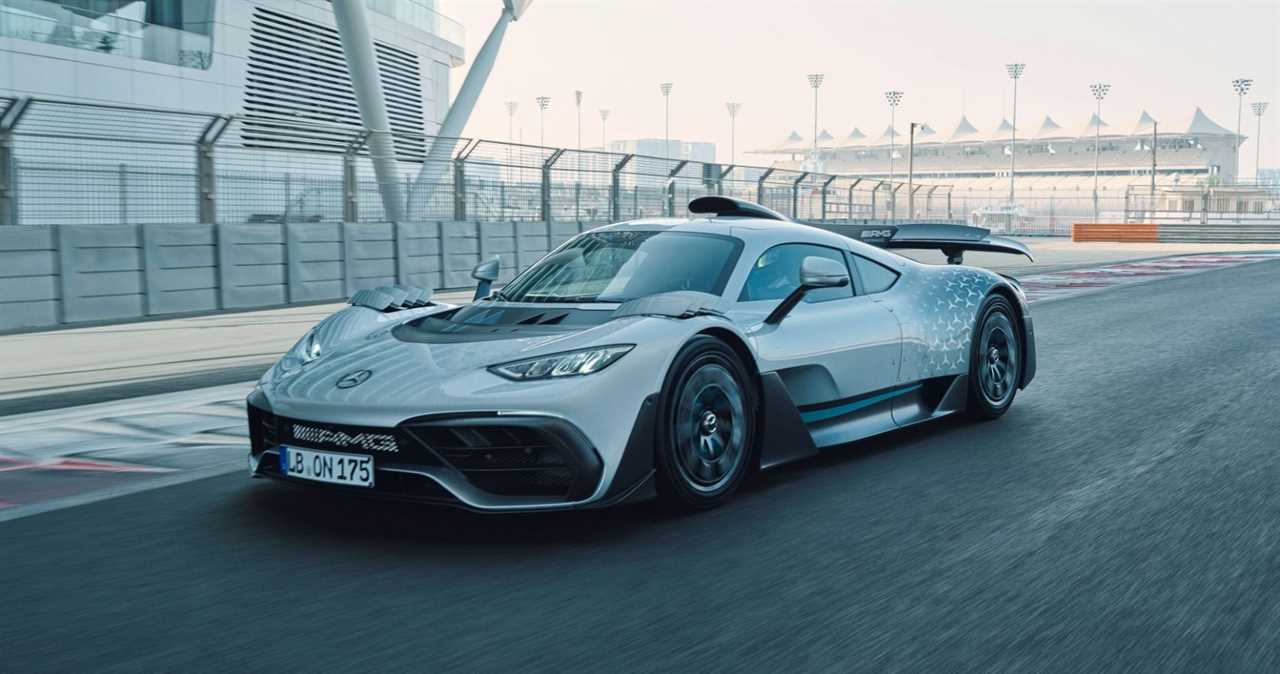
The Mercedes-AMG One is almost here. It was way back in 2015 when Mercedes first announced that they were going to produce a hypercar with a Formula 1 engine. Naturally, upon hearing this, everyone sat up straight in their chairs and wondered whether to believe it or not. It sounded very unlikely and uncharacteristically mad from the usually sensitive Mercedes Benz group. But here we are, seven years later, and the release of the AMG One is just around the corner. Costing $2.72 million each, all 275 units have already sold.
Some of us may have expected Mercedes to slightly soften the concept when it came to production. Often, manufacturers make big promises only to let us down when it comes to reality. But Mercedes really has put an F1 engine in a road car, and it’s amazing.
The Mercedes-AMG One Has An Actual Formula One Car Engine
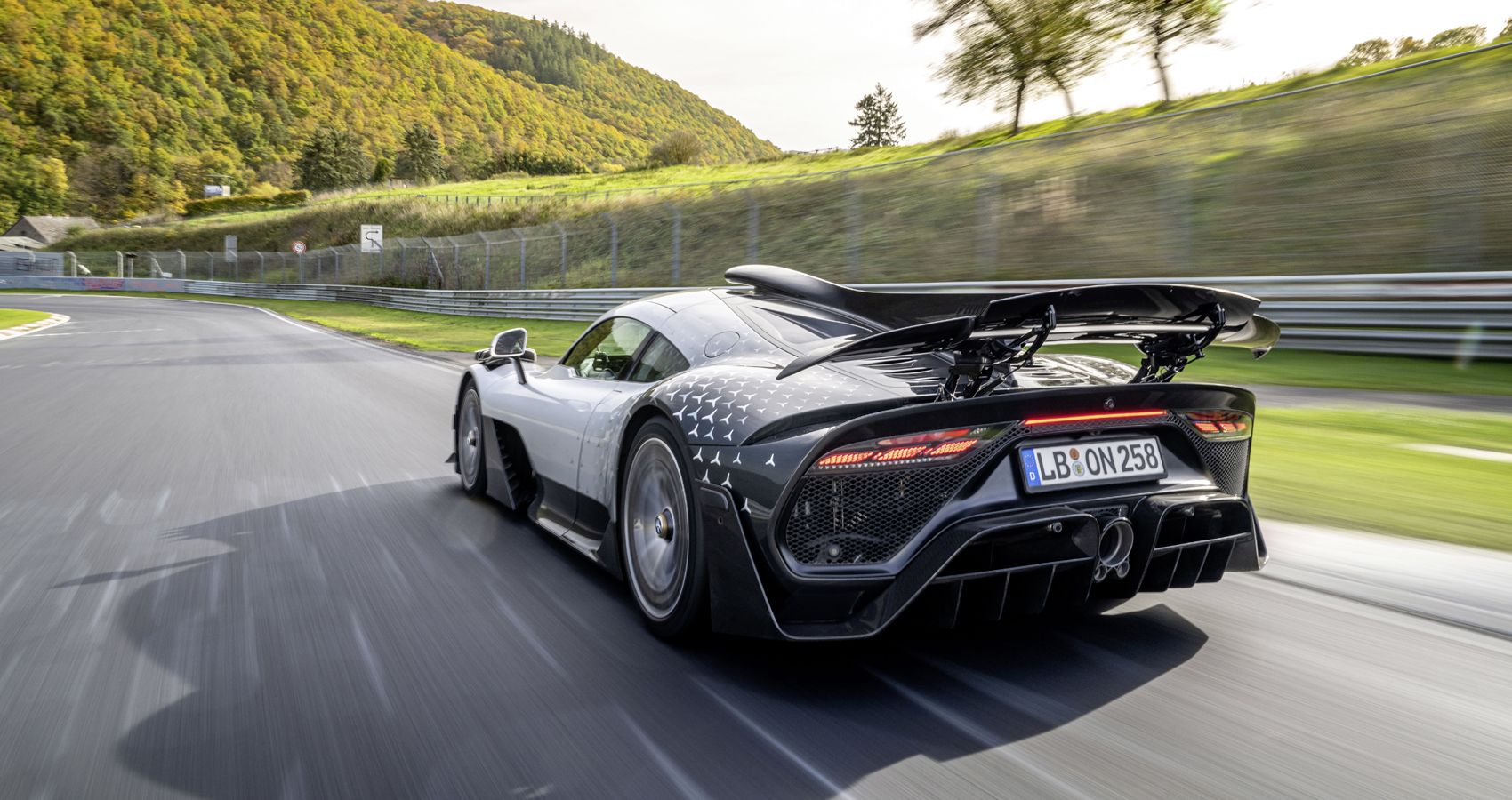
These days, if we heard a car manufacturer say that they’re putting an F1 engine in their car, we’d immediately smell an exaggeration. It could be that the engine gets made in the same area as the race engines, or the same team developed it, or it shares a component. However, Mercedes have actually gone and done it. The AMG One genuinely has a modified F1 engine. To be more specific, it’s the PU106B Hybrid unit from the 2015 Mercedes F1 car.
This 1.6-liter turbocharged V6 puts out an impressive (considering the displacement) 566 hp. But that’s only the beginning. The V6 works in conjunction with four (yes, four) electric motors. A 120 kW motor connected to the crankshaft, a 90 kW unit on the turbocharger and two more 120 kW electric motors on the front axle combine with the gasoline engine to produce a total of 1,049 hp. That’s more like it.
This is a very highly strung power plant, and modified to make it more functional on the road. The redline has come down from F1 levels, although it still sits at an outrageous, 11000 rpm. The engine will only last for 30k miles, at which point it will need to return to Mercedes for a rebuild.
All of this technology means that the AMG One can get from 0-60 mph in 2.8 seconds, from 0-124 mph in 7 seconds and from 0-186 mph in just 15.6 seconds. It’ll keep going all the way to a limited top speed of 219 mph. These numbers are top class, especially when considering that the AMG One is not built for straight line speed. Mercedes wanted this car to be right at home on the track and, as such, it needed some very advanced aero.
The Aero On The AMG One Is So Advanced
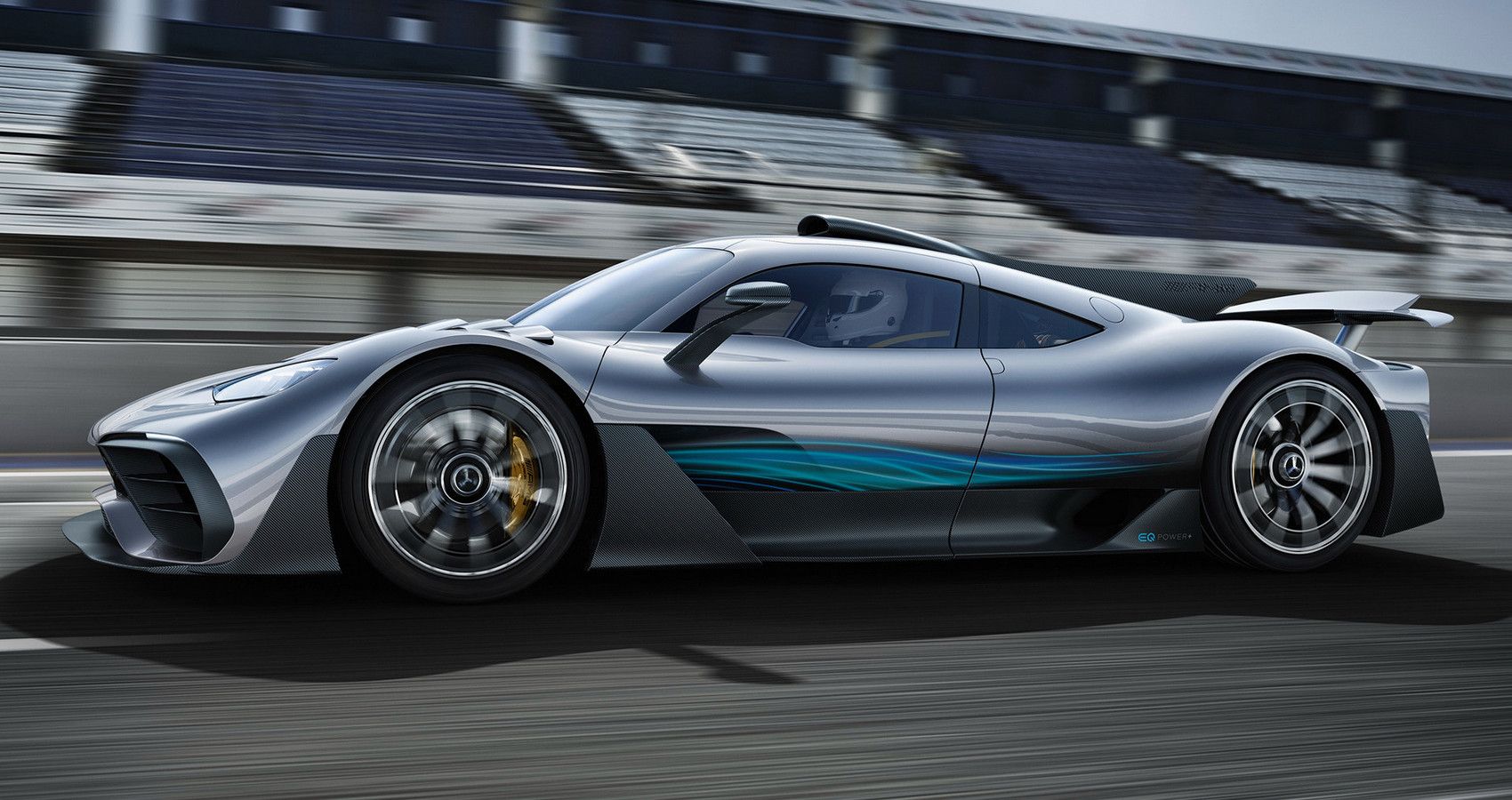
Mercedes has pulled out all the stops with the aerodynamics on the one. Starting at the nose, the front diffuser has active flaps and front wheel arches have dynamic louvers. The louvers can open to provide additional ventilation for the front wheels and to increase the downforce by altering the pressure differential. Aerodynamically optimized wheels fill the arches.
Moving further back, it all starts to get a bit more dramatic. There’s a huge fin running off the roof of the car back, as on LMP1 cars, that aids stability. This reaches a massive two–piece adjustable rear wing that completes the menacing package. It goes without saying that this aero is highly functional. The AMG One even has a Drag Reduction System (DRS), just like in Formula 1. With DRS activated, the rear wing detracts and the louvers close to reduce downforce by 20%, thus increasing acceleration.
The AMG One Suspension Is Full On Race Car
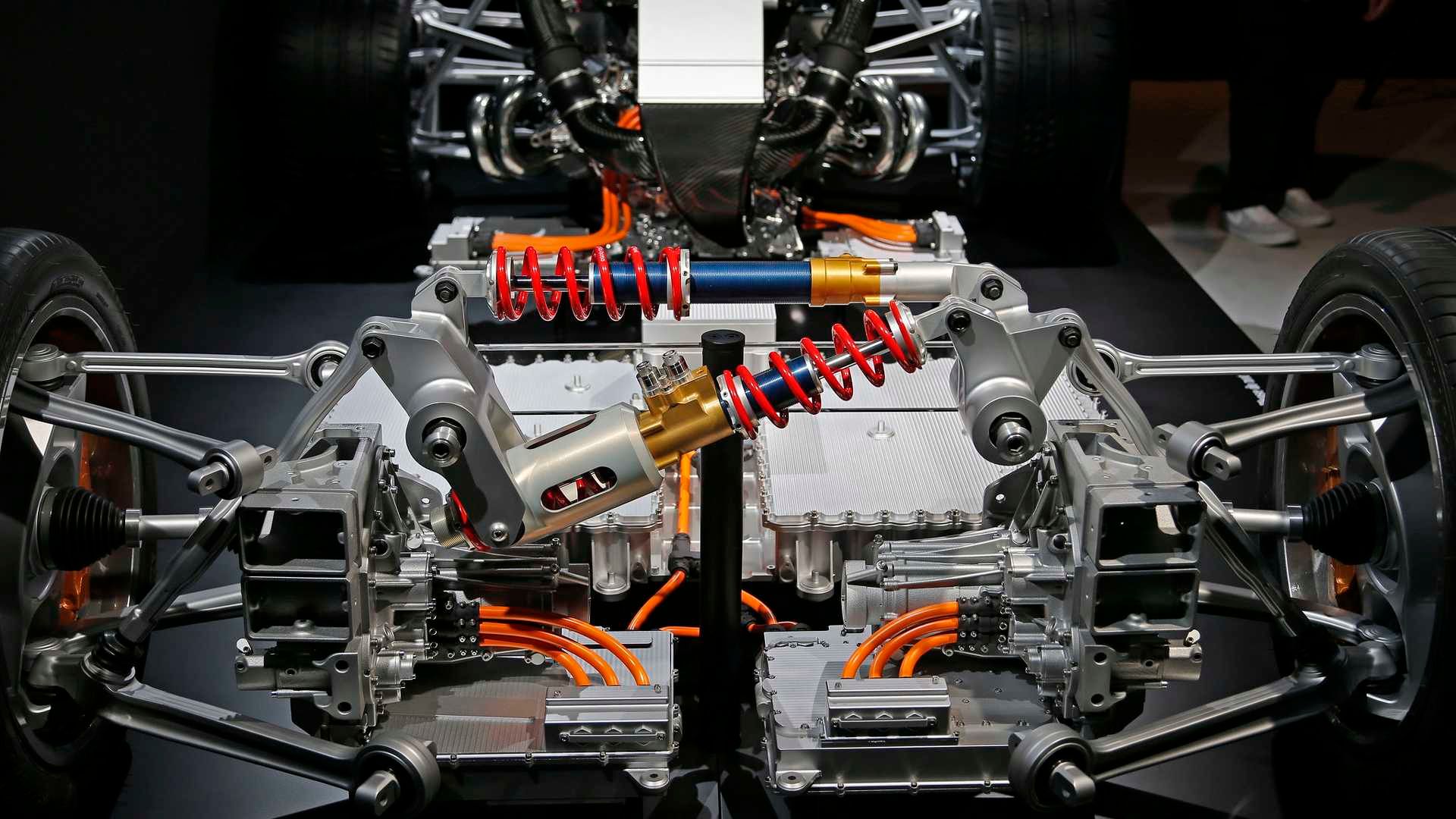
The suspension on the Mercedes-AMG One is suitably high end. It consists of four inboard dampers, two at the front and two at the rear. These get operated by push rods, in the same way F1 suspension works. At each end, one damper controls the vertical motions and the other controls body roll. The dampers are then held by bell crank mounts, meaning that there is no need for any further damper mounts or triangulation, which keeps the weight down. The suspension links are individual linkage arms and are not interconnected.
The carbon tub of the AMG One stays true to the motorsport engineering theme and the overall weight is 3,737 lbs. The trick suspension matches this chassis and is perfectly designed to keep this weapon pointed in the right direction.
The Interior of The Mercedes-AMG One Makes You Feel Like An F1 Driver
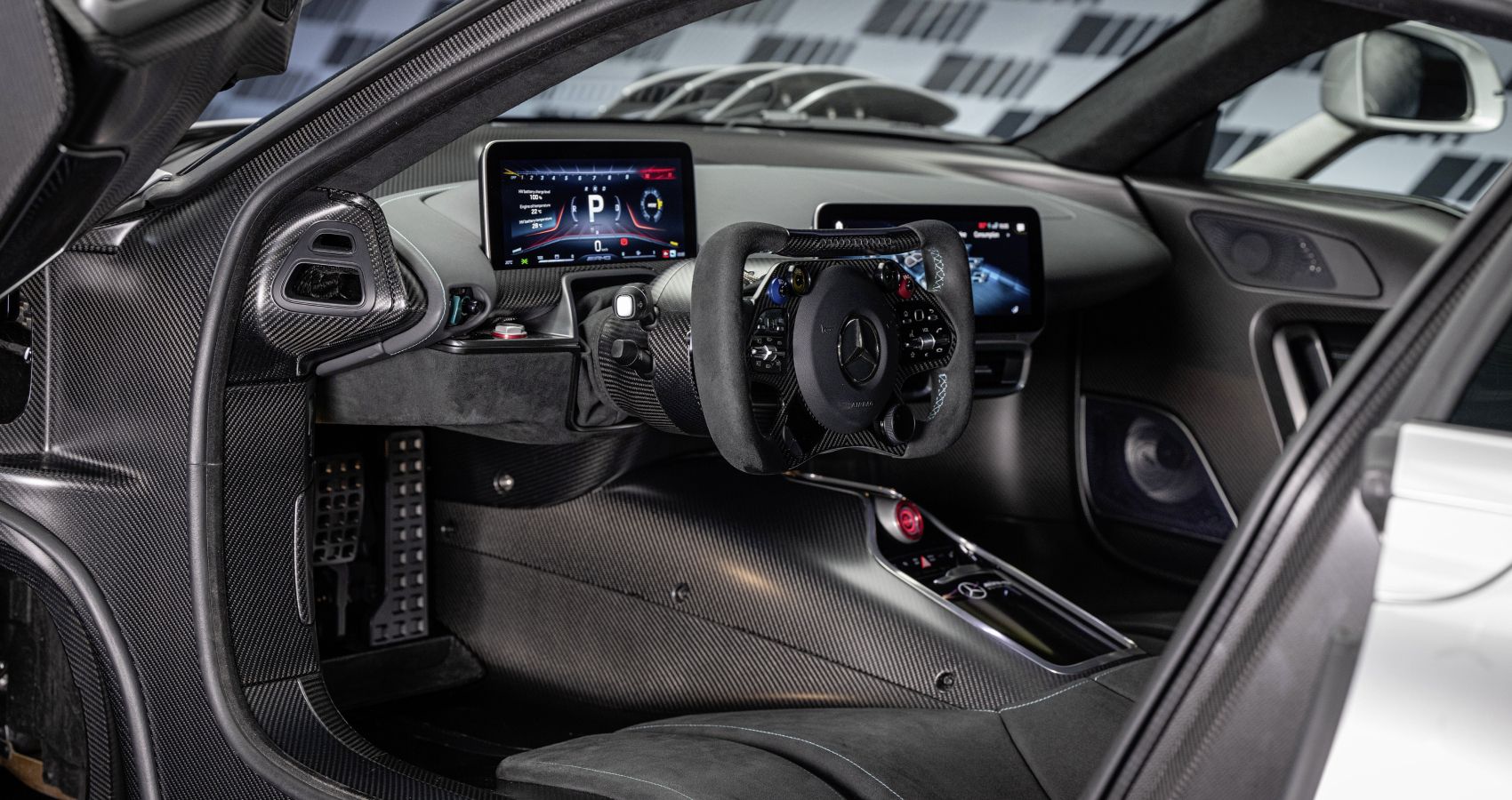
Slipping into the cockpit is no mean feat with the butterfly doors and the wide sills from the carbon tub. Once you manage it, you’ll find yourself sitting in a minimal bucket seat that holds you in such a way that your legs extend straight out towards the pedals, for a proper F1 seating position. Reach your hands out, and you will find the rectangular steering wheel that Lewis Hamilton would be familiar with it. It’s complete with buttons for DRS and cruise control (fantastically labeled ‘Pit Limiter’) among others, and an LED strip across the top will tell you when to shift up a gear. It’s typically well appointed in leather and carbon fiber, as you would expect from Mercedes. There’s a digital dash, air conditioning and a rearview camera (due to the lack of rear window), and that’s about it for creature comforts in the interior.
The focus of the AMG One is on pure performance. It currently holds the fastest lap around the Nürburgring, a full 8 seconds ahead of the Porsche GT2 RS. Not many people believed Mercedes when they said they were putting an F1 engine in a road car, but they stayed true to their word, and what a car it is.
Sources: Mercedes-Benz, Road & Track, Kyle Engineers






